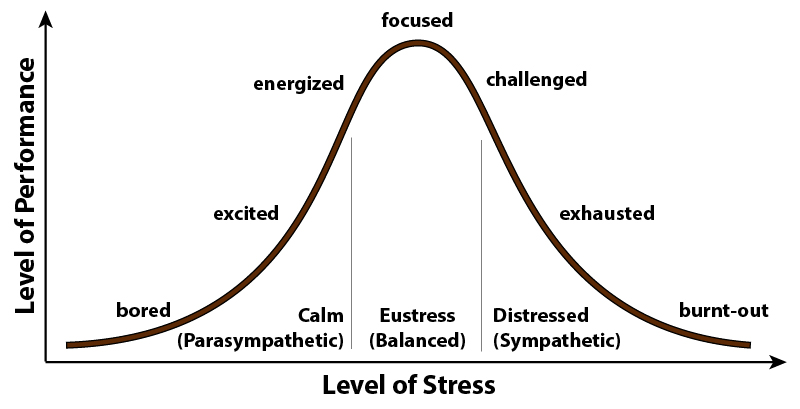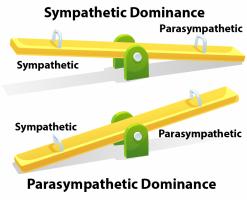
 How are you coping with life’s demands? Are you able to approach the challenges of life with a calm, focused energy? Or, is your life filled with agitation, tension, irritability, anxiety or depression?
How are you coping with life’s demands? Are you able to approach the challenges of life with a calm, focused energy? Or, is your life filled with agitation, tension, irritability, anxiety or depression?
These are important questions, because in the rush of modern life, your nervous system gets heavily taxed. Concerns about work, finances, family problems or even the state of the world can cause stress, and depending on the health and balance of your nervous system, you are either coping with these situations smoothly or struggling with them.
It is possible to experience a greater sense of balance in your life, to feel both relaxed and energized. You can actively meet life’s challenges with energy and excitement, but without experiencing tension or anxiety. The key is to create a healthy balance in your nervous system and the information you’ll learn here can help you to do just that.
If you want more energy, less muscle tension, better sleep, greater mental focus and a more balanced life, read on to unlock the secrets to nervous system balance.
Your Amazing Nervous System
Twenty-four hours a day, seven days a week and 365 days a year your nervous system is active, managing all of the processes of your body. It regulates your breathing, heart rate, blood pressure, digestion, elimination and your cycles of rest and activity.
Your central nervous system (CNS), is busy carrying information from your senses to your brain. This allows you to observe, listen and interact with your external environment. As you process this information in your brain and make decisions, the CNS allows you to act on these decisions by sending signals to your muscles so you can move and act. It is the part of your nervous system over which you have conscious control.
The Autonomic Nervous System (ANS)
At the same time, another part of your nervous system, the autonomic nervous system (ANS), is regulating all the essential functions you never have to think about. It’s sensing the internal environment of your body and adjusting your breathing, heart rate, blood pressure, hormones, digestion and other processes that happen without your conscious control.
There are two branches of the ANS, the sympathetic (SNS) and parasympathetic (PNS) nervous system. Generally speaking, the SNS, is designed to “wind you up” while the PNS is designed to “wind you down.” There is always a dynamic balance between these two systems, sort of like balancing on a seesaw (see illustration). You feel your best when these two branches are held in a dynamic balance. If you go out of balance too far in either direction, you’ll get too “wound up” or too “wound down” and experience nervous system problems like anxiety or depression. Understanding both branches of your autonomic nervous system and how to balance them is essential to feeling good.

The Sympathetic Nervous System (SNS)
— Focus, Fight or Flight
 When something frightens you to the point you “jump” you’re experiencing what happens when the nervous system seesaw tips in the direction of the sympathetic nerves. This system primes you to take action in the face of a challenge.
When something frightens you to the point you “jump” you’re experiencing what happens when the nervous system seesaw tips in the direction of the sympathetic nerves. This system primes you to take action in the face of a challenge.
Your SNS primes you to take action by increasing heart rate and blood pressure, moving blood away from the digestive system and into the muscles, dilating your bronchioles to take in more oxygen and otherwise giving you the ability to move. It also makes you more focused, helping you to concentrate on the task at hand and stick with it until the problem is resolved.
All this “winding up” action occurs under the stimulating effect of epinephrine and norepinephrine, which act as both hormones and neurotransmitters. Because these substances are released when something scares you, people often refer to them as stress hormones. However, it’s more accurate to think of them as action hormones. They’re not designed to make you stressed, they’re designed to help you stay alert, awake and focused, as well as take appropriate actions to meet the challenges of life.
What is commonly known as stress, should really be called distress. Distress occurs when there is too much sympathetic activity coupled with too little parasympathetic activity. When you’re distressed you feel nervous, anxious and overwhelmed and can eventually lead to fatigue and exhaustion.
When it is balanced stress can take on a positive character. This has been called eustress. As shown in the graph above eustress helps you achieve peak performance. If the balance of your nervous system shifts too far in either direction, towards the sympathetic or the parasympathetic side, your nervous system becomes imbalanced and your capacity to take on life’s challenges suffers.
The Parasympathetic Nervous System (PNS)
— Rest, Relax and Repair
 During your daily cycle, the SNS is most active in the morning and midday. In the evening the balance shifts towards the PNS, so you can unwind and eventually sleep. The PNS peaks at night because it’s the part of your nervous system that allows you to rest and perform necessary repairs and maintenance to body systems. The PNS also activates digestive secretions so you can break down and assimilate your food. It also lowers blood pressure, and heart rate, and is even involved in sexual arousal.
During your daily cycle, the SNS is most active in the morning and midday. In the evening the balance shifts towards the PNS, so you can unwind and eventually sleep. The PNS peaks at night because it’s the part of your nervous system that allows you to rest and perform necessary repairs and maintenance to body systems. The PNS also activates digestive secretions so you can break down and assimilate your food. It also lowers blood pressure, and heart rate, and is even involved in sexual arousal.
For anyone who is overwhelmed by distress, PNS activity sounds great because they need more rest and relaxation, but if the balance shifts towards too much PNS activity and too little SNS activity you still won’t feel good. A person with too much PNS activity may be easily excited, but not be able to focus and turn that excitement into constructive activity. Excessive PNS activity can also make a person overly sensitive to noises, smells, touch and other sensory inputs, which means they are easily distracted and unable to focus or concentrate. This may make them flighty, inattentive and overly sensitive. As the graph suggests, high PNS activity can leave you feeling bored, apathetic and depressed.
Additional Resources
Strategies for Health by Steven Horne
Become a Member
Steven Horne's monthly member program is a way for you to get great information about herbs and natural healing to build your herbal business. Including the ability to share issues of Sunshine Sharing like this one. Click here to learn more.
